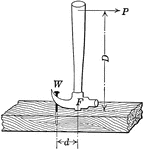Clipart tagged: ‘ratio’

Equal Dihedral Angles
Illustration of 3 equal dihedral angles. "Two dihedral angles have the same ratio as their plane angles."
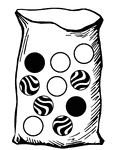
Bag with Ten Marbles
Bag with four white, four striped, and two black marbles used for a probability activity.
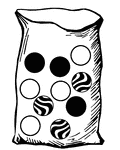
Bag with Ten Marbles
Bag with four white, three black, and three striped marbles used for a probability activity.
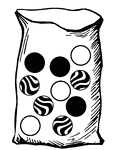
Bag with Ten Marbles
Bag with four striped, three black, and three white marbles used for a probability activity.
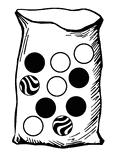
Bag with Ten Marbles
Bag with four black, four white, and two striped marbles used for a probability activity.

Bag with Ten Marbles
Bag with four black, three white, and three striped marbles used for a probability activity.
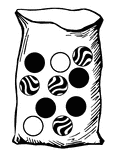
Bag with Ten Marbles
Bag with four black, four striped, and two white marbles used for a probability activity.

Unit Circle
Illustration of a unit circle (circle with a radius of 1) superimposed on the coordinate plane. The…
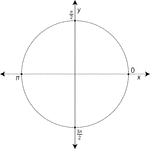
Unit Circle Labeled At Quadrantal Angles
Illustration of a unit circle (circle with a radius of 1) superimposed on the coordinate plane with…

Unit Circle Labeled At Special Angles
Illustration of a unit circle (circle with a radius of 1) superimposed on the coordinate plane with…
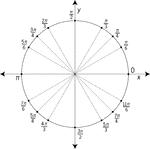
Unit Circle Labeled At Special Angles
Illustration of a unit circle (circle with a radius of 1) superimposed on the coordinate plane with…
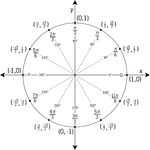
Unit Circle Labeled In 30° Increments With Values
Illustration of a unit circle (circle with a radius of 1) superimposed on the coordinate plane with…
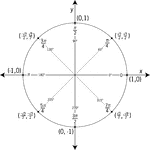
Unit Circle Labeled In 45 ° Increments
Illustration of a unit circle (circle with a radius of 1) superimposed on the coordinate plane with…
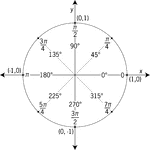
Unit Circle Labeled In 45° Increments With Values
Illustration of a unit circle (circle with a radius of 1) superimposed on the coordinate plane with…
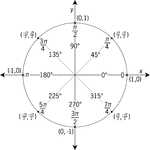
Unit Circle Labeled In 45° Increments With Values
Illustration of a unit circle (circle with a radius of 1) superimposed on the coordinate plane with…
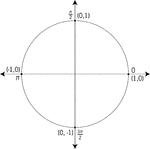
Unit Circle Labeled With Quadrantal Angles And Values
Illustration of a unit circle (circle with a radius of 1) superimposed on the coordinate plane. All…
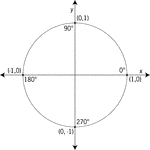
Unit Circle Labeled With Quadrantal Angles And Values
Illustration of a unit circle (circle with a radius of 1) superimposed on the coordinate plane with…

Unit Circle Labeled With Quadrantal Angles And Values
Illustration of a unit circle (circle with a radius of 1) superimposed on the coordinate plane with…
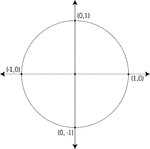
Unit Circle Labeled With Quadrantal Values
Illustration of a unit circle (circle with a radius of 1) superimposed on the coordinate plane. At each…
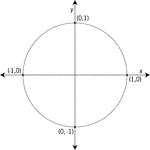
Unit Circle Labeled With Quadrantal Values
Illustration of a unit circle (circle with a radius of 1) superimposed on the coordinate plane with…
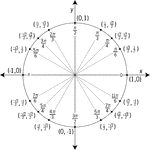
Unit Circle Labeled With Special Angles And Values
Illustration of a unit circle (circle with a radius of 1) superimposed on the coordinate plane with…
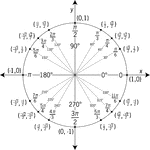
Unit Circle Labeled With Special Angles And Values
Illustration of a unit circle (circle with a radius of 1) superimposed on the coordinate plane with…
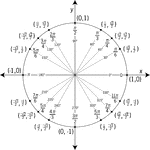
Unit Circle Labeled With Special Angles And Values
Illustration of a unit circle (circle with a radius of 1) superimposed on the coordinate plane with…
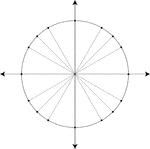
Unit Circle Marked At Special Angles
Illustration of a unit circle (circle with a radius of 1) superimposed on the coordinate plane. All…

Equal Circles With Intercepted Arcs
Illustration of equal circles to show that two central angles have the same ratio as their intercepted…
2 Similar Cylinders
Illustration of 2 similar cylinders. The height and diameter of the smaller cylinder is half that of…

2 Soup Can Cylinders
Illustration of 2 soup cans that are similar cylinders. The diameter and height of the smaller can is…
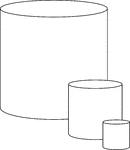
3 Similar Cylinders
Illustration of 3 similar cylinders. The height and diameter in each successively smaller cylinder is…
3 Similar Cylinders
Illustration of 3 similar cylinders. The height and diameter in each successively smaller cylinder is…

Corresponding Points in an Ellipse and Circle
Illustration of half of an ellipse. "The ordinates of two corresponding points in an ellipse and its…
Extension Ladder
Illustration of an extension ladder. If ladder is leaned against a building, it will form a right triangle…
Leaning Ladder
Illustration of a ladder that is not perpendicular to the ground. If it is set on the ground and leaned…
Leaning Ladder
Illustration of a ladder that is not perpendicular to the ground. If it is set on the ground and leaned…
Leaning Ladder
Illustration of a ladder that is not perpendicular to the ground. If it is set on the ground and leaned…
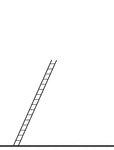
Leaning Ladder
Illustration of a ladder that is not perpendicular to the ground. If it is set on the ground and leaned…

Ladder Leaning Against a Building
Illustration of a ladder leaning against the side of a building (wall) to form a right triangle .

Ladder Leaning Against a Tree
Illustration of a ladder leaning against a palm tree, that is perpendicular to the ground, to form a…
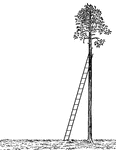
Ladder Leaning Against a Tree
Illustration of a ladder leaning against a palm tree, that is perpendicular to the ground, to form a…
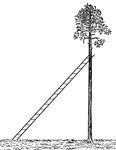
Ladder Leaning Against a Tree
Illustration of a ladder leaning against a palm tree, that is perpendicular to the ground, to form a…

Ladder Leaning Against a Tree
Illustration of a ladder leaning against a palm tree, that is perpendicular to the ground, to form a…

2 Ladders Leaning Against a Tree
Illustration of 2 ladders leaning against opposite sides of a palm tree to form similar right triangles.…

3 Ladders Leaning Against a Wall
Illustration of 3 ladders leaning against the side of a building (wall) to form right triangles. The…
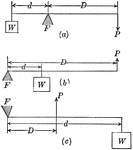
Lever and Fulcrum
Illustration of a lever with fulcrum F. W represents the weight lifted, P is the force that does the…
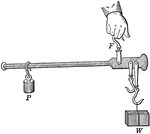
Steel-yard Used as a Lever
Illustration of an ordinary steel-yard being used as a lever. F represents the fulcrum. Weight P is…

Hydraulic Machine Exerting Pressure
Illustration of a hydraulic machine. "A principle known as Pascal's Law states that pressure exerted…

2 Rectangular Prisms
Illustration of 2 right rectangular prisms. The bases are congruent, but the height of the smaller prism…

2 Rectangular Prisms
Illustration of 2 right rectangular prisms. The bases are congruent, but the height of the smaller prism…
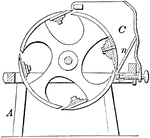
Grooved Pulleys
These pulleys are grooved such as to guide the inner belt, in this system there is less of a chance…

Leaning Tower
Illustration of a leaning tower with a perpendicular drawn from the top of the tower to the ground to…
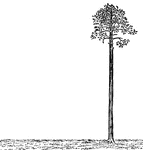
Palm Tree Perpendicular to Ground
Illustration of a palm tree that is perpendicular to the ground. The tree is perfectly straight, as…

Wheel and Axle with Rope and Bucket
"...the mechanical advantage of this machine (wheel and axle) equal the ratio between the radii, diameters,…


